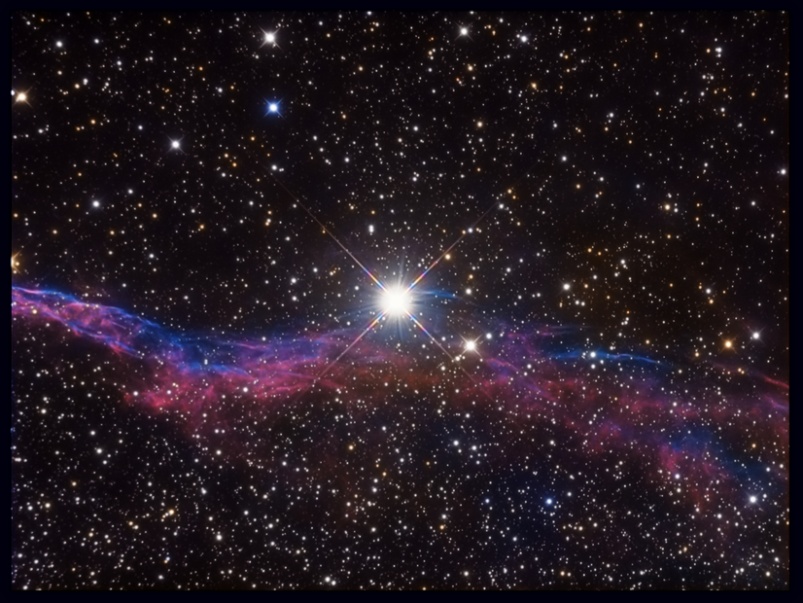|
|
Nebulae VEIL NEBULA WEST : NGC 6960 |  | (CLICK REFRESH ON YOUR BROWSER IF IT DOESN'T APPEAR)
Equipment and exposition:
GSO RC 8" F/8
ATIK 383L+ with Orion Nautilus Usb filter wheel, Astronomik Filters 50,8
Guided with Starlight Lodestar with Orion OAG
Neq6 Geoptik Modded
L : 16 X 300 Secs. bin 2x
RGB : 10 x 300 Sec.s (Each channel) bin 2x
Processed with PixInsight ,Maximdl,Photoshop CS4
SIte : Val Troncea, Pragelato.
FULL SIZE
About this object:
The Veil Nebula is a cloud of heated and ionized gas and dust in the constellation Cygnus. It constitutes the visible portions of the Cygnus Loop (radio source W78, or Sharpless 103), a large but relatively faint supernova remnant. The source supernova exploded some 5,000 to 8,000 years ago, and the remnants have since expanded to cover an area roughly 3 degrees in diameter (about 6 times the diameter, or 36 times the area, of the full moon). The distance to the nebula is not precisely known, but recent evidence from the Far Ultraviolet Spectroscopic Explorer (FUSE) supports a distance of about 1,470 light-years.
The Hubble Space Telescope captured several images of the nebula. The analysis of the emissions from the nebula indicate the presence of oxygen, sulfur, and hydrogen. This is also one of the largest, brightest features in the x-ray sky.
Descrizione:
La nebulosa è un antico resto di supernova; la stella che ha originato quest'oggetto è esplosa diversi millenni fa. Ciò che ora è visibile sono dei debolissimi filamenti, ancora in espansione alla velocità di decine di km/s; nelle foto a lunga posa o con un CCD si distinguono diversi filamenti disposti in tre gruppi principali: il più ad ovest è quello di NGC 6960 (C 34), in direzione della brillante stella 52 Cygni; il secondo, poco più ad est, è formato dalle nebulose NGC 6974 e NGC 6979, disposto con la concavità ad est come il precedente; l'ultimo, ad est, è formato dalle sezioni NGC 6992 (C 33) e NGC 6995 (ai quali si aggiunge IC 1340), orientato in modo speculare rispetto agli altri due. Questa parte è conosciuta pure come Nebulosa Rete (Inglese Network).
Si pensa che nel giro di pochi millenni questa "meraviglia" del cielo boreale scomparirà, perché ad una grande velocità di espansione corrisponde pure un elevato indice di dispersione della sua materia, che presto esaurirà la sua energia ricevuta durante l'esplosione, e si disperderà nel mezzo interstellare, "quasi" senza lasciare traccia.
Bibliography: NASA/Wikipedia |
|
|
|
|
|

